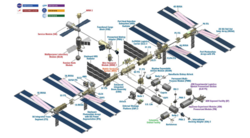news
Introducing Space Grade Linux
A new project, targeting Linux for the proverbial final frontier—outer space—was the subject of a talk (YouTube video) at the Embedded Linux Conference, which was held as part of Open Source Summit Europe in Amsterdam in late August. Ramón Roche introduced Space Grade Linux (SGL), which is currently incubating as a special interest group (SIG) of the Embedding Linux in Safety Applications (ELISA) project. The idea is to create a distribution with a base layer that can be used for off-planet missions of various sorts, along with other layers that can be used to customize it for different space-based use cases.
By way of an introduction, Roche said that he is from Mexico and is the maintainer of a few open-source-robotics platforms; he comes from many years in the robotics industry. He is the general manager of the Dronecode project and is the co-lead of its Aerial Robotics interest group. Beyond that, he and Ivan Perez are co-leading the Space Grade Linux SIG.
Linux and space
Roche asked the audience a series of questions about space, ending with: ""is Linux in space a worthwhile dream?"" The audience responded affirmatively, but it was a trick question. ""The answer is 'no', it's actually a present reality, not a dream."" He then went through a list of projects using Linux in space including the James Webb Space Telescope, SpaceX Starlink satellites, the Ingenuity helicopter on Mars, the International Space Station (ISS), and more. He noted that Starlink is the largest deployment of Linux in space, already, with a plan for up to 30,000 Linux-based satellites in its constellation.

